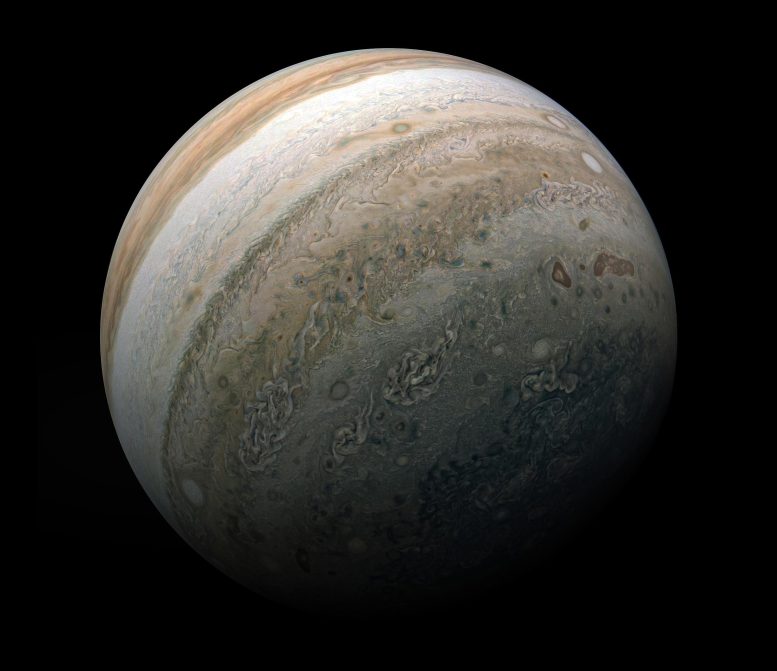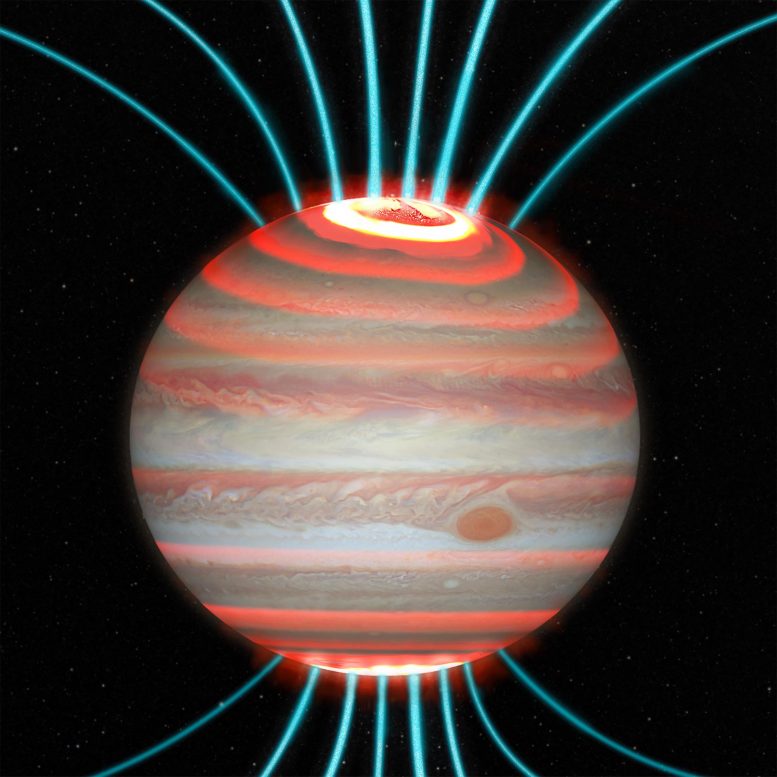NASA’s NuSTAR Spots Highest-Energy Light Ever Detected From Jupiter – And Solves

Jupiter’s southern hemisphere is shown in this image from NASA’s Juno mission. New observations by NASA’s NuSTAR reveal that auroras near both the planet’s poles emit high-energy X-rays, which are produced when accelerated particles collide with Jupiter’s atmosphere. Credit: Enhanced image by Kevin M. Gill (CC-BY) based on images provided courtesy of NASA/JPL-Caltech/SwRI/MSSS
The planet’s auroras are known to produce low-energy X-ray light. A new study finally reveals higher-frequency X-rays and explains why they eluded another mission 30 years ago.
Scientists have been studying Jupiter up close since the 1970s, but the gas giant is still full of mysteries. New observations by NuSTAR space observatory have revealed the highest-energy light ever detected from Ulysses mission saw no X-rays when it flew past Jupiter in 1992.
X-rays are a form of light, but with much higher energies and shorter wavelengths than the visible light human eyes can see. NASA’s Chandra X-ray Observatory and the ESA (European Space Agency) XMM-Newton observatory have both studied low-energy X-rays from Jupiter’s auroras – light shows near the planet’s north and south poles that are produced when volcanoes on Jupiter’s moon Io shower the planet with ions (atoms stripped of their electrons). Jupiter’s powerful magnetic field accelerates these particles and funnels them toward the planet’s poles, where they collide with its atmosphere and release energy in the form of light.

Jupiter is shown in visible light for context with an artistic impression of the Jovian upper atmosphere’s infrared glow is overlain, along with magnetic field lines. Jupiter’s powerful magnetic field accelerates ions and funnels them toward the planet’s poles, where they collide with its atmosphere and release energy in the form of light. Credit: J. O’Donoghue (JAXA)/Hubble/NASA/ESA/A. Simon/J. Schmidt
Electrons from Io are also accelerated by the planet’s magnetic field, according to observations by NASA’s Juno spacecraft, which arrived at Jupiter in 2016. Researchers suspected that those particles should produce even higher-energy X-rays than what Chandra and XMM-Newton observed, and NuSTAR (short for…
Read More: NASA’s NuSTAR Spots Highest-Energy Light Ever Detected From Jupiter – And Solves
